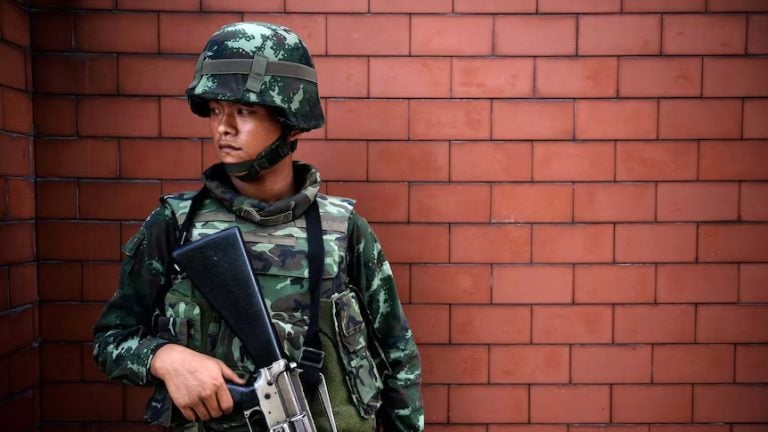Missiles were launched off the northern coast of the Philippines on Sunday as U.S. and Filipino forces engaged in their first fully integrated defense drills. This military exercise coincided with China’s announcement that it had seized control of Tiexian Reef, a territory also claimed by Manila. The ongoing territorial disputes in the South China Sea have intensified over recent months, with China asserting claims over the majority of the region, despite an international ruling declaring these claims have no legal foundation.
This year’s annual “Balikatan” exercises involve approximately 17,000 personnel and aim to simulate a “full-scale battle scenario” to deter perceived Chinese aggression in the contested waters. The drills represent a significant collaboration between the treaty allies amid heightened tensions.
According to Chinese state media, the country’s coast guard initiated “maritime control” over Tiexian Reef, also referred to as Sandy Cay, earlier in the month. This small sandbank is located near Thitu Island, known as Pag-asa, which hosts a Philippine military facility. As of now, the Philippine government has not officially responded to China’s claims.
In Zambales province, north of the capital Manila, U.S. Marine Corps personnel demonstrated the MADIS (Mobile Air Defense Integrated System), successfully intercepting drones during a coastal defense exercise. The system operated alongside the Philippines’ SPYDER missile system, working together to defend against simulated cruise missile threats. According to Matthew Sladek, commander of the U.S. 3rd Littoral Anti-Air Battalion, the coordination between MADIS and SPYDER enhances collective defensive capabilities.
The military exercises come amid sightings of Chinese naval vessels in proximity to the Philippines. Reports reveal that the Chinese aircraft carrier Shandong was detected just southwest of Babuyan Island shortly after the Balikatan exercises commenced. Furthermore, three Chinese vessels were reportedly spotted about 60 kilometers from Zambales.
U.S. Defense Secretary Pete Hegseth previously emphasized the commitment of the United States to its alliance with the Philippines, highlighting the importance of deterrence in light of perceived threats from China. Meanwhile, a spokesperson for the Chinese foreign ministry criticized the Balikatan exercises, labeling them a destabilizing factor for the region.
The “Balikatan” exercises are set to continue on Monday, with forces simulating defense against potential enemy landings along southern Palawan island, signaling steadfast military collaboration between U.S. and Filipino forces in the face of ongoing regional tensions.
















